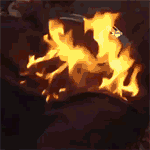|
origami posted:No, I do not really notice things. Bad points: worrying about poo poo to wear when training. Gis are expensive. Like buying a nose job when you can't afford it.
|
|
|
|

|
| # ? May 29, 2024 13:00 |
|
osietra posted:I just did, but you have some excellent points: knees and elbows. Can you remind me when you're supposed to fight two people again?
|
|
|
|
Gis aren't really that expensive if you don't buy something like a hemp gi or something which in the end is just a fashion item. A basic gi costs like 60bux or something. Boxing gloves costs about 60bux. A pair of shorts and a rash guard costs about 60bux.
|
|
|
|
Here is a new article I wrote on some of the variables of punching force and how fighters maximize their performance: http://www.sciencedirect.com/science/article/pii/S0167945714002140 It is free to read for the next couple of months.
|
|
|
|
Lt. Shiny-sides posted:Here is a new article I wrote on some of the variables of punching force and how fighters maximize their performance: Says I gotta pay for it <  > >
|
|
|
|
drat, it works for me. If it doesn't work for everyone else I'll write up a summary, if yall want.
|
|
|
|
Lt. Shiny-sides posted:drat, it works for me. If it doesn't work for everyone else I'll write up a summary, if yall want. Yes, as always.
|
|
|
|
KildarX posted:Says I gotta pay for it < Same
|
|
|
|
OK since that link doesn’t work here is a brief summary: Research into combat sports has found that there is a key variable in punching called effective mass (EM). High EM appears to be the big difference between an effective punch and a crappy arm punch (this isn’t completely confirmed and will be a focus of my research in the next couple of years). There is the possibility that high EM is what we really think about as someone being heavy handed. EM is basically the inertial contribution of a fighter to transfer of momentum during their punch. This concept is based off of the spring mass model and models the human as a single “particle” impacting as a ballistic object. Currently the literature identifies a double peak activation of the muscles as the best way to increase EM. The double peak muscular activation is basically a burst of muscular activity at the beginning of the punch to propel the arm (and athlete) towards the target, followed by relaxation of the musculature to allow for the limb to increase in velocity, and finally a second burst of activation to stiffen the arm and body to transfer momentum into the target. Double peak muscular activation fits really well with the current concept of EM. If the “particle” is stiffer there would be more inertial contribution to the transfer of momentum. I identified a problem with this idea, which is that a punch is not ballistic. The fighter is still connected to the ground and can continue to add force during impact. I argued that further research is needed into whether or not this added force exists and if so what is more important, double peak muscular activation or the added force during impact? This is a major part of my thesis and I’ll start looking into it in the New Year. The last part of the paper talks about what coaches can do to improve EM in their fighters. There isn’t a lot of information in the literature, but what has been found is that experience is thought to be the biggest factor for improving EM. So just spend time training! Besides that I recommend that fighters train for max strength to recruit fast twitch muscle fibres and then train low load, high velocity movements to teach the fibres to contract and relax with greater speed. That’s it.
|
|
|
|
Lt. Shiny-sides posted:Currently the literature identifies a double peak activation of the muscles as the best way to increase EM. The double peak muscular activation is basically a burst of muscular activity at the beginning of the punch to propel the arm (and athlete) towards the target, followed by relaxation of the musculature to allow for the limb to increase in velocity, and finally a second burst of activation to stiffen the arm and body to transfer momentum into the target. Every since you brought up the concept in here, I've been wondering how well I adhere to that. Can measuring acceleration alone (say with tracking dots and high-speed cameras) be enough to confirm that techniques are executed with proper double peak activation? Or would you have to have the muscles wired up? On the extreme newbie end, this makes sense -- you see beginners carrying themselves very tense, where surely they are doing eccentric contractions with muscles opposing the punching motion, which is part of why they gas out so quickly before they learn better technique.
|
|
|
|
Lt. Shiny-sides posted:OK since that link doesn’t work here is a brief summary: With cutting weapons we practice something similar, where just before reaching the target (the first burst of activity to propel the weapon forward) we squeeze with our pinkies and ring fingers to give a secondary acceleration to the weapon. It makes a tremendous difference and for some people it's the difference between cutting and not cutting at all.
|
|
|
|
Verisimilidude posted:With cutting weapons we practice something similar, where just before reaching the target (the first burst of activity to propel the weapon forward) we squeeze with our pinkies and ring fingers to give a secondary acceleration to the weapon. It makes a tremendous difference and for some people it's the difference between cutting and not cutting at all.
|
|
|
|
Video of a finnish sambo competition where I participated. I lost, but it was fun. Part of one of my matches is 0:25-0:51 and it shows a very humiliating submission, I'm the guy in red. What I tried to do was to twist my body and pull my arm towards me when he would try the armbar so my joint wouldn't be there to lock - if this explanation makes sense at all - but I hosed it up and was too slow. I had three matches and dominated all of them with 5-8 point lead and on the last second I would somehow gently caress up, twice I got into armbar and once I got thrown by sumi-gaeshi which tipped the points for the opponent. I had the potential to win the whole thing, every match went really really well, I threw guys left and right and I got pins and escaped from throw and submission attempts, but I always made that one mistake and lost, so 95% succes rate isn't enough if the mistakes you do are submission related. I was pretty banged up in the end but I'm still kinda satisfied in a weird way, I managed to do so much stuff and got two or three clean ippon throws with all of my opponents and a lot of other throws, so for a judo player it's a big deal. I also got to fight my whole matches, I didn't lose immediatedly, nothing sucks more than losing in the first ten seconds and then sitting on the bench for the rest of the day. It was a good day. Gonna have to check out if I could find some judo competitions where I could participate. I'm the shifty looking fucker standing in red on the back row on the left.  Also here I'm tripping a dude I guess 
|
|
|
|
What does the 2000 in the event name mean?
|
|
|
|
It's the name of the club. It was established in 2000.
|
|
|
|
It's basically just sambo but with different shoulderpads and helmets.
|
|
|
|
God drat the last week or so I'm not sharp at all. Can't block poo poo, can't hit poo poo, and overthink combos/my attack and in turn get hit bleh
|
|
|
|
It's mentioned in the 1st post, but is this the established place to discuss fencing? I can't find another thread.
|
|
|
|
kimbo305 posted:Every since you brought up the concept in here, I've been wondering how well I adhere to that. Can measuring acceleration alone (say with tracking dots and high-speed cameras) be enough to confirm that techniques are executed with proper double peak activation? Or would you have to have the muscles wired up? To measure effective mass you need a force dynamometer and 2D video. Both the impulse and velocity are used to calculate it. To measure double peak muscular activation you need EMG to get the electrical readings. The thing is at this point we don't know what is good or bad double peak. Even if you could measure it, it wouldn't help your training. Give me a year and I'll have more info.
|
|
|
|
De Nomolos posted:It's mentioned in the 1st post, but is this the established place to discuss fencing? I can't find another thread.
|
|
|
|
Doesn't really matter but anytime it's mentioned a ton of dudes come out of nowhere
|
|
|
|
Possibly dumb question but what the heck. I started boxing for a few months last year, but ever since I got my new job I haven't gotten within 100 feet of any kind of boxing gym. But while I may not get any proper formal training for the time being, at the very least I feel I should do something to keep my skills (the little that I've learned) sharp. Sadly I do not have access to any boxing equipment other than a pair of 6 oz. (I think?) gloves. So my question is this: without any bags to punch, would it be useless for me to do things like speed drills every day? Or stuff like shadowboxing?
|
|
|
|
Mr Interweb posted:So my question is this: without any bags to punch, would it be useless for me to do things like speed drills every day? Or stuff like shadowboxing? Not at all. If you really have to presence of mind to train alone, without gear, by all means, it's as useful as ever. Speed drills will still improve speed. Shadowboxing will still help with your movement, technique, or whatever you concentrate on. I promise I will salute you if you start shadow boxing 10 rounds in the park by yourself every morning.
|
|
|
|
I started shadow boxing while out running, it's awesome people will avoid the hell out of you.
|
|
|
|
Ligur posted:Not at all. Sweet! 
|
|
|
|
Christoff posted:Doesn't really matter but anytime it's mentioned a ton of dudes come out of nowhere
|
|
|
|
In the new one make sure you remember to let them fall over after you parry or you just do a normal hit instead of a riposte
|
|
|
|
Lamadrid posted:No joke I picked some subs and poo poo from youtube.Stephan Kesting or something like that has a bunch of basic videos for the class jiu jitsu challenged.Also eddie Bravo and that poo poo with the Gracies. I learnt some of the real basics from youtube, I don't think its that daft an idea.
|
|
|
|
De Nomolos posted:It's mentioned in the 1st post, but is this the established place to discuss fencing? I can't find another thread. It's a combat sport, just very far on the sport side of the spectrum. So sure, why not? I tried a thread, ages ago, in the Punchsport Pogoda, but it died off with only a smattering of interest. Crazy Achmed posted:Excellent. In that case, I've recently been focusing on improving my parries (from piss-poor to actually functional/reliable) by trying to keep my cool and hold them for a fraction of a second before starting my riposte. Otherwise, I get the blade contact but it's too weak to take their point off target properly and I get countered pretty hard as I'm moving in for a riposte. Anyone have any tips for keeping calm in this sort of situation? Before I get on with the rest of my response, I want clarify one point: during an exchange, there is no calm and no time to think. All of your training up to this point has been to stock up and polish your tactical toolbox, and it's just a matter of reaching in and pulling out the right thing. Foil? And what do you mean by saying your parry is "too weak"? Are they being called mal parre or is your opponent's remise/continuation timing you out? The first is caused by bad reffing, and the second is a technical one with numerous causes. I can't help you if your local refs are stuck in the 80's and don't acknowledge beat-parries. Also, this is more likely to be a technical issue on your part than anything else. And do you know how to fix technical problems? Drill the everliving gently caress out of it. Whatever action you pull from your toolbox is only as effective as your muscle memory, which comes from lots and lots of drilling. I will say that holding a parry, as a general rememdy, doesn't feel right to me. Might be that I'm a sabreur, but holding the parry slows your riposte. Why? You're fighting against the deflection that effects your blade, and you could better use that momentum to get your tip on target as opposed to fighting it.
|
|
|
|
Just as a heads up bjjhq has one sweet rear end rash guard on sale.
|
|
|
|
I don't want an rear end rash
|
|
|
|
mewse posted:I don't want an rear end rash Not even a sweet rear end rash?
|
|
|
|
Crazy Achmed posted:I'm up for fencing chat. Or i could start a separate thread if it's warranted? I'd be up for a separate thread. I did this ages ago, in college, mostly for a girl who was on the team. It wasn't til I met my now wife and found out about her sordid fencing past that I got back into it. I'm looking to register for a refresher class in foil that starts in 2 weeks. I did judo for a while but had to retire due to head injuries sustained in a car accident. I've found that I can still function in the combative environment of fencing now, so I'm looking to get back to that. Someday id like to do saber. What do you think of these $150 foil starter sets you can find online?
|
|
|
|
BirdOfPlay posted:Before I get on with the rest of my response, I want clarify one point: during an exchange, there is no calm and no time to think. All of your training up to this point has been to stock up and polish your tactical toolbox, and it's just a matter of reaching in and pulling out the right thing. De Nomolos posted:What do you think of these $150 foil starter sets you can find online? What's the club like that you're fencing at? If they have some serviceable club kit they can lend you, it might be better to spend the money on fewer but better quality things, a bit at a time, depending on your budget.
|
|
|
|
De Nomolos posted:What do you think of these $150 foil starter sets you can find online? They're functional, but each piece of that kit is meant to be grown out of, as it were. I'd recommend going piecemeal, building up your personal kit over a stretch of time. Having your own full kit is an expensive proposition and will easily cost a couple hundred dollars. That said, no one should own a back-zip lame or jacket for any reason, because the cost difference is, generally,  . Just make sure your jacket/lame match you handedness, being left-handed and using a right-handed jacket is not only illegal but dangerous. . Just make sure your jacket/lame match you handedness, being left-handed and using a right-handed jacket is not only illegal but dangerous.In regards to Achmed's safety concerns, the cheaper end of the spectrum typically follows the CE Level 1 guidelines (350N for jackets and masks, 600N for knickers, plastrons, and bibs, if I recall). If you're in the US, I would recommend Absolute. Crazy Achmed posted:Ah, yeah, foil. It's definitely a technical error on my part, refs usually call it remise in time. By "stronger parry" I mean "more fully-formed", I guess - moving a bit further out with my arm/forte, or putting a little more force into the beat, to move my opponent's point just that little bit more off target. There are a couple of tall guys in my club who rely far too heavily on remises and counters, and being shorter I need a little more time to close distance before they're back on target. You're right - rote drilling is definitely the way to make me not panic/spaz out here. What are your feet doing? Are you taking a retreat with your parries? Do you riposte with just a quick extension or do you work in a lunge? Ideally, you should be retreating or jumping back, but that's a bit more advanced with your parries and taking the parry in time with your front foot. Key points are as follows, and I can expound on any if you'd like: Taking a full retreat to prepare yourself for your followup - either a direct riposte or the beginning of your offense. Doing a half-retreat is lazy and leaves you with vastly reduced options. Taking the parry with the front foot means you can begin you response immediately. Taking it with the back foot mean you have to wait for the front foot to land or, worse, you do a half-retreat and not a full retreat (see above). Finally, with your parry complete you have to decide on your response. This isn't a time for thought, and is merely a choice of: riposte with lunge, riposte with advance-lunge (or step-lunge, if you prefer), or to begin a long attack/march. And these are all based on distance.
|
|
|
|
I too am 100% up for a separate fencing thread.
|
|
|
|
ICHIBAHN posted:I too am 100% up for a separate fencing thread. Me too, especially if I can contribute some historical fencing stuff.
|
|
|
|
I'll add more equipment questions in a new thread, but here's a link: http://www.fencingnewyork.com/flexible-sabre-fencing-starter-set.html?gclid=CM32mNzU9sICFQIQ7AodhzQAZg
|
|
|
|
Lt. Shiny-sides posted:To measure double peak muscular activation you need EMG to get the electrical readings. The thing is at this point we don't know what is good or bad double peak. Even if you could measure it, it wouldn't help your training.
|
|
|
|

|
| # ? May 29, 2024 13:00 |
|
There is a fencing school about 45min from where I live, anybody know anything about it? http://nwifencingclub.com/2401.html I'm interested in fencing and I once heard mastering fencing being compared to getting a doctoral degree. I have experience in Arnis but I doubt that'll help.
|
|
|


























